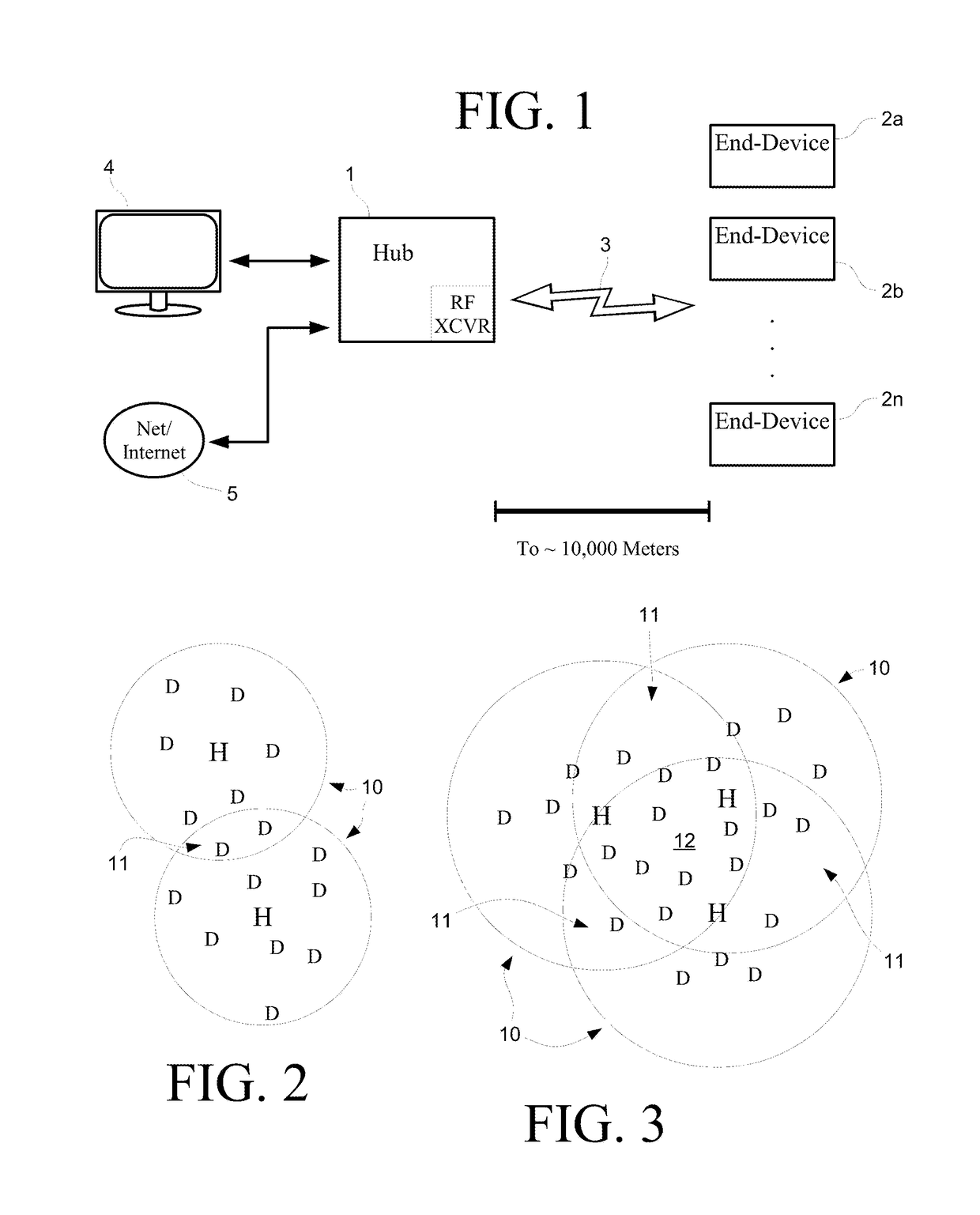Deployment and communications test of intermediate-range devices using a short-range wireless mobile device
a mobile device and short-range technology, applied in multiplex communication, data switching networks, machine-to-machine/machine-type communication services, etc., can solve problems such as reducing data throughput, audio and video data cannot be streamed in good quality or in real-time, and devices using short-range protocols are generally limited to servi
- Summary
- Abstract
- Description
- Claims
- Application Information
AI Technical Summary
Benefits of technology
Problems solved by technology
Method used
Image
Examples
Embodiment Construction
[0038]Shown in FIG. 1 is an exemplary intermediate-range system employing a hub-type topology. A hub 1 is placed within wireless range of end-devices 2a-n, communicating 3 over the airwaves at a distance of up to 10 km or more, depending upon environmental conditions. In many cases, end-devices 2 are electronic devices that accept commands and transmit information to a controlling hub 1. Included in hub 1 and each of end-devices 2a-n is a processor, software for performing the functions of the device, and an RF transceiver. Hub 1 could be an ordinary personal computer with an RF adapter or card installed, or it might simply look like a box with an antenna and a port or interface permitting configuring and monitoring; it is foreseen that a manufacturer would likely supply a hub 1 in a ready-to-use state such that an installer need not open its case or install any software. In one configuration, hub 1 is connectable to a personal computer 4, for example through a USB interface, comput...
PUM
 Login to View More
Login to View More Abstract
Description
Claims
Application Information
 Login to View More
Login to View More - R&D
- Intellectual Property
- Life Sciences
- Materials
- Tech Scout
- Unparalleled Data Quality
- Higher Quality Content
- 60% Fewer Hallucinations
Browse by: Latest US Patents, China's latest patents, Technical Efficacy Thesaurus, Application Domain, Technology Topic, Popular Technical Reports.
© 2025 PatSnap. All rights reserved.Legal|Privacy policy|Modern Slavery Act Transparency Statement|Sitemap|About US| Contact US: help@patsnap.com



